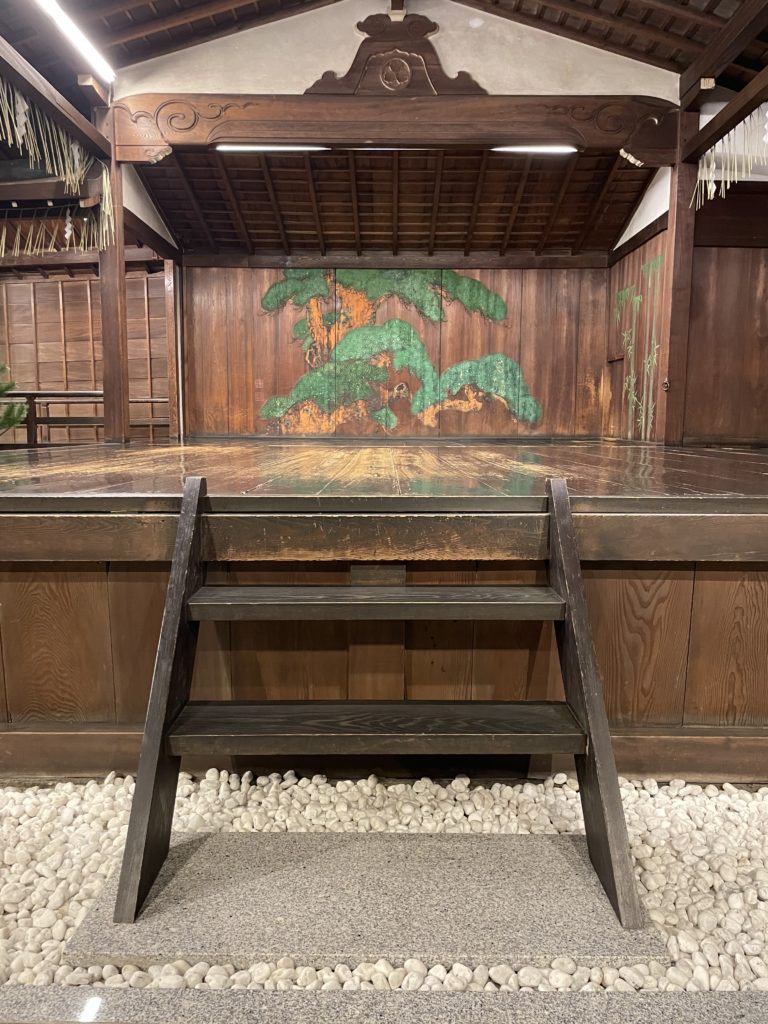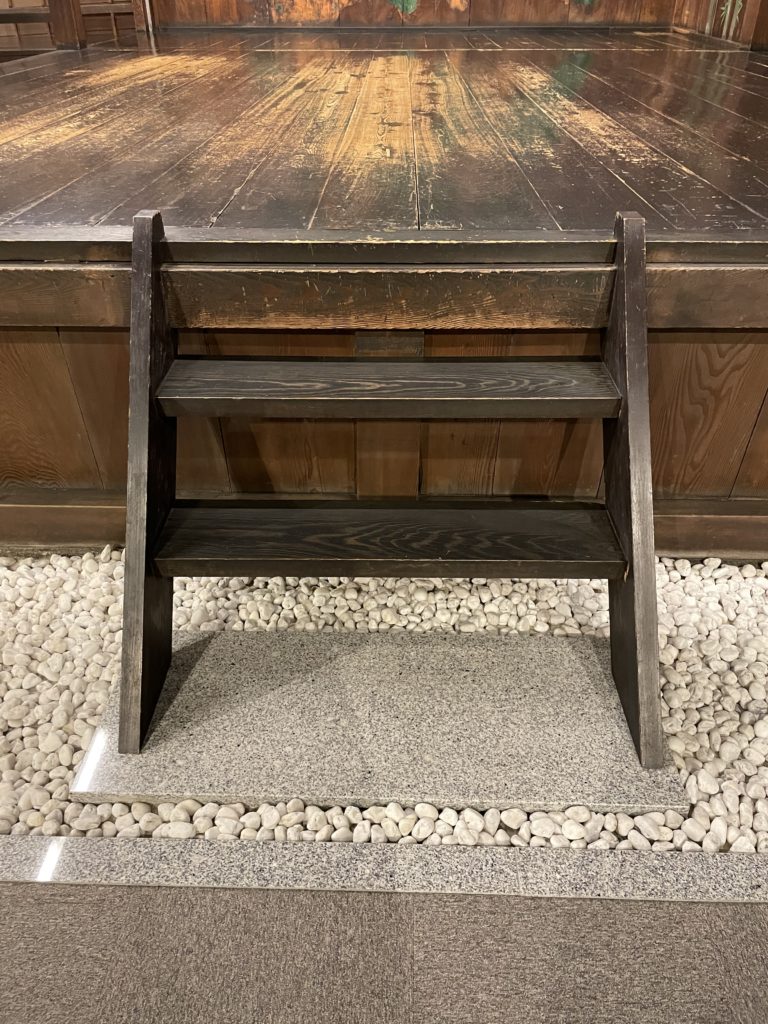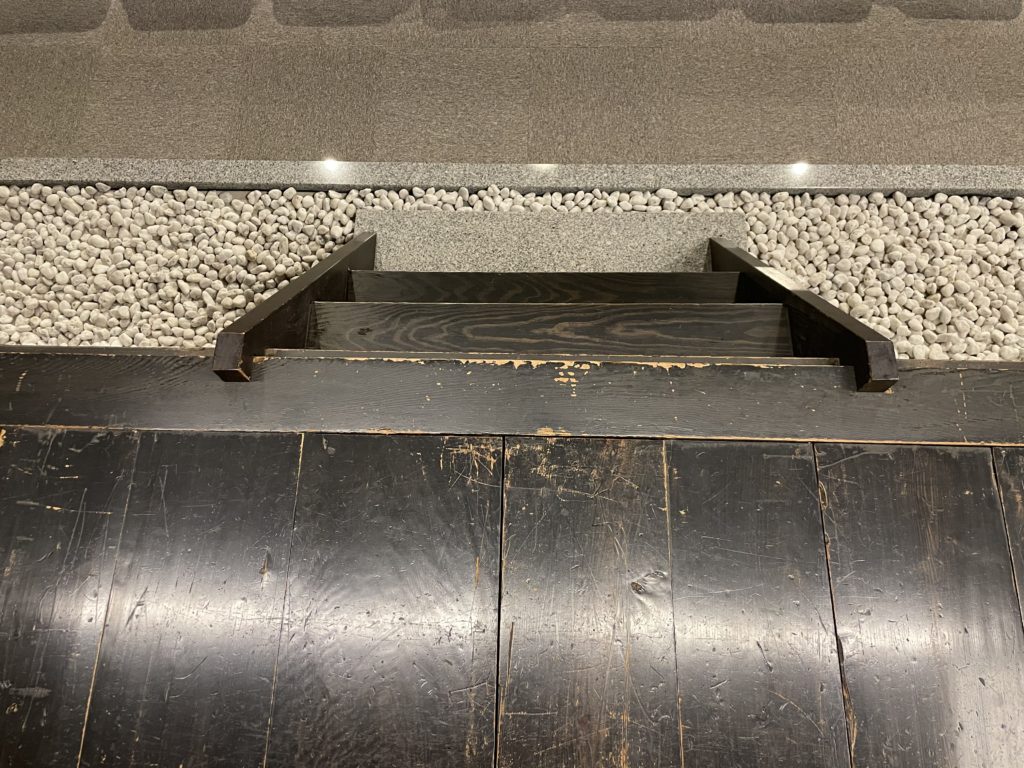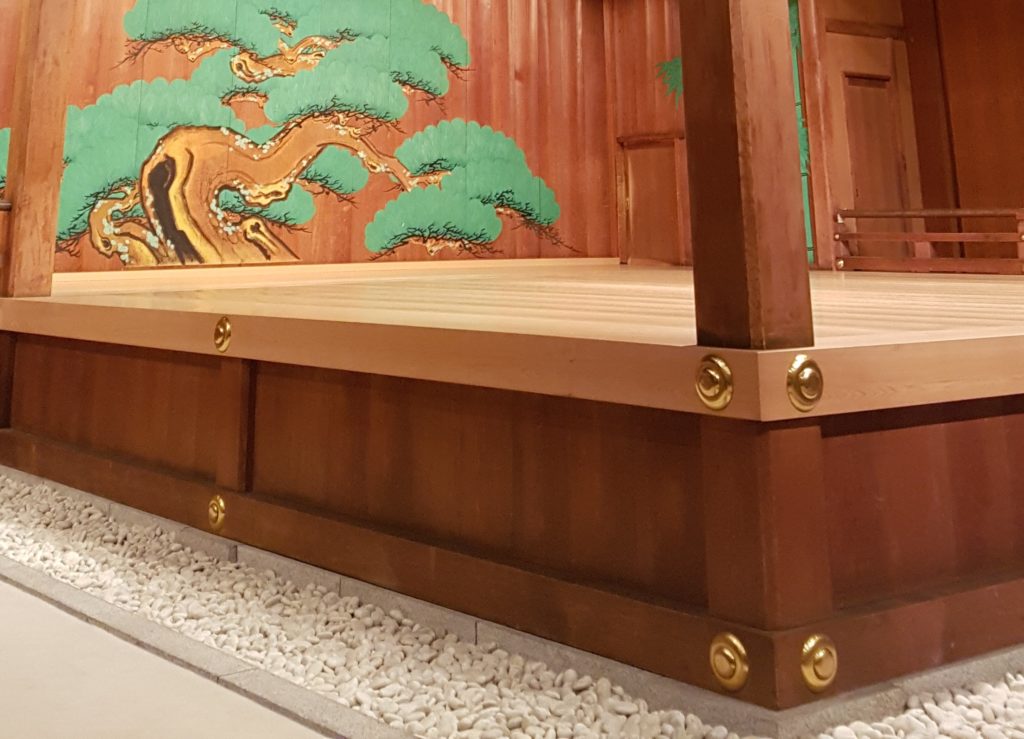
Photo credits: Shigeyama Sennojō III


The small set of stairs (kizahashi) descending from the edge of the stage downstage center are rarely used in contemporary performances. They are mainly used for auspicious performances, such as the play Sanbasō. In the past, patrons of the theatre would use the stairs to present gifts to the actors. The stairs descended to a boarder of white rocks (shirasu), which separate the performance space from the audience space. It is said that these rocks symbolize water and also serve a double function of helping to reflect light back up to the stage to help make the actors more visible, which would have been very important for outdoor performances before the introduction of electric lighting.
